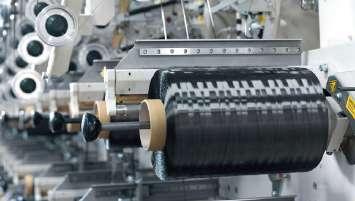COVER STORY
23
THE BIG DIGITAL STEP MS. KSHIPRA GADEY Businesses across industries are adopt- equipment suppliers face growing pro- and incorporate it into their overall ing digitalization more than ever before duction and energy costs, diminishing technologies. in order to stay relevant in a competi- margins, shorter production schedules, • More orders for all runs: tive climate and meet consumers’ ever- and increased quality and flexibility deincreasing expectations. It is also rel- mands. Digitalization is the key to pro- Digital textile printing can be used for evant in terms of properly working in a cess excellence – and hence to cost and short, long, or even micro runs. Web to country such as India, which is growing resource savings. Manufacturers can print owners and printers who want to expand into digital textile as a global economic superKey Points printing have a great opporpower. • Digitalization is a key to process excellence tunity ahead of them. Given the growing relevance They must respond to the of utilising digital tools for • Digitalization saves cost and resources changing needs of textile business progress, compa- • Adaptation of digitization producers or distributors, nies in a variety of indus• Helpful for small and medium size business which means they must actries, including finance, commodate long runs as well banking, real estate, and • Importance of digital textile printing as micro runs to produce healthcare, are giving it sig• Web to print and variable data printing technologies more orders in a cost-effecnificant consideration. tive and efficient manner. The apparel industry is • Acceptance of green technology
Individually, there is a decommencing its digitization • Employing data in real time mand for individualised journey, and a larger revofashion, but there is also a lution is expected with the • Digitalization gives potential to contribute to sustainability market group that requires integration of existing technologies. boost their output, improve their com- cost optimization and bulk customizapetitiveness, and respond to changes tion. The two categories are distinct, Because of the instant commercial conmore swiftly thanks to the capabilities yet there is a growing trend to develop sequences it achieves, digital technoldigital textile printing businesses. of digitalization. ogy is gaining acceptance. These busi• Buy now, see now: ness outcomes respond to changing Accepting Digitization business requirements, increase transThere is a disconnect between the garparency in global supply chains, and ments displayed at fashion shows and achieve critical mass customization on their regular market delivery. This shorter time scales. time lag can last up to 6 months. This gap can be closed by giving end-users It shifted the business model away with the appropriate technologies to orfrom traditional printing and toward der clothing or fabrics as soon as they digital printing. This results in shorter view them. lead times, increased design flexibility, improved quality, and data-driven business processes. The textile and garment sectors were The textile sector is being impacted by late adopters of digitization and still digitization, which offers substantial have a long way to go. Large corporabenefits in terms of establishing new tions have already begun to make a and agile business models for the garname for themselves in the garment ment industry. industry, but small and medium-sized Today’s textile manufacturers and businesses must ramp up digitalization
SEPTEMBER 2021





















